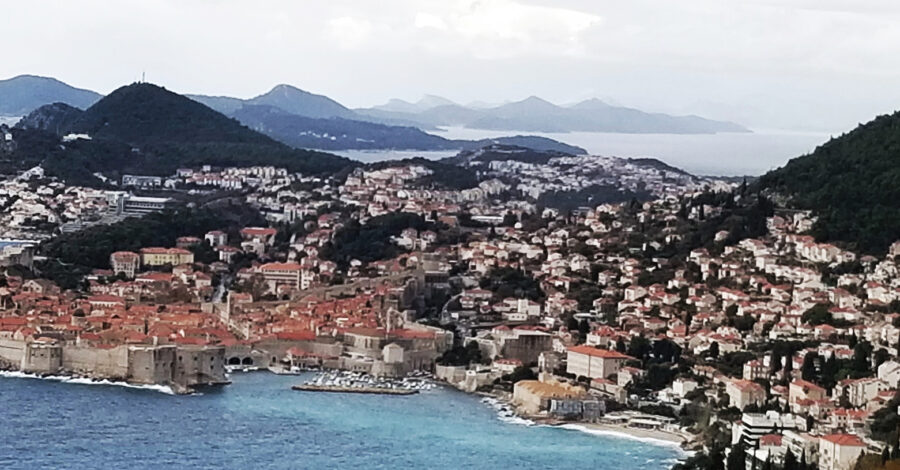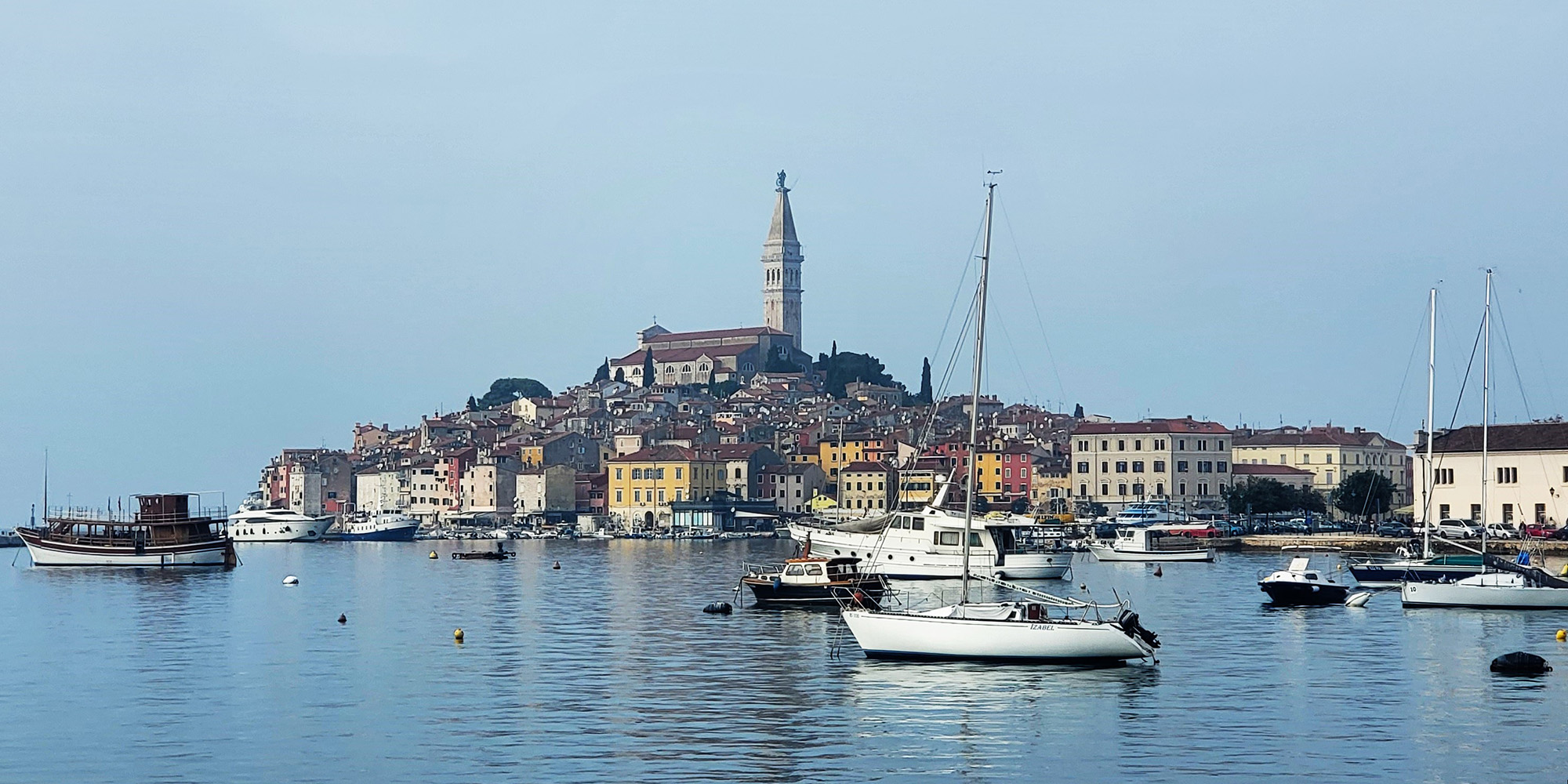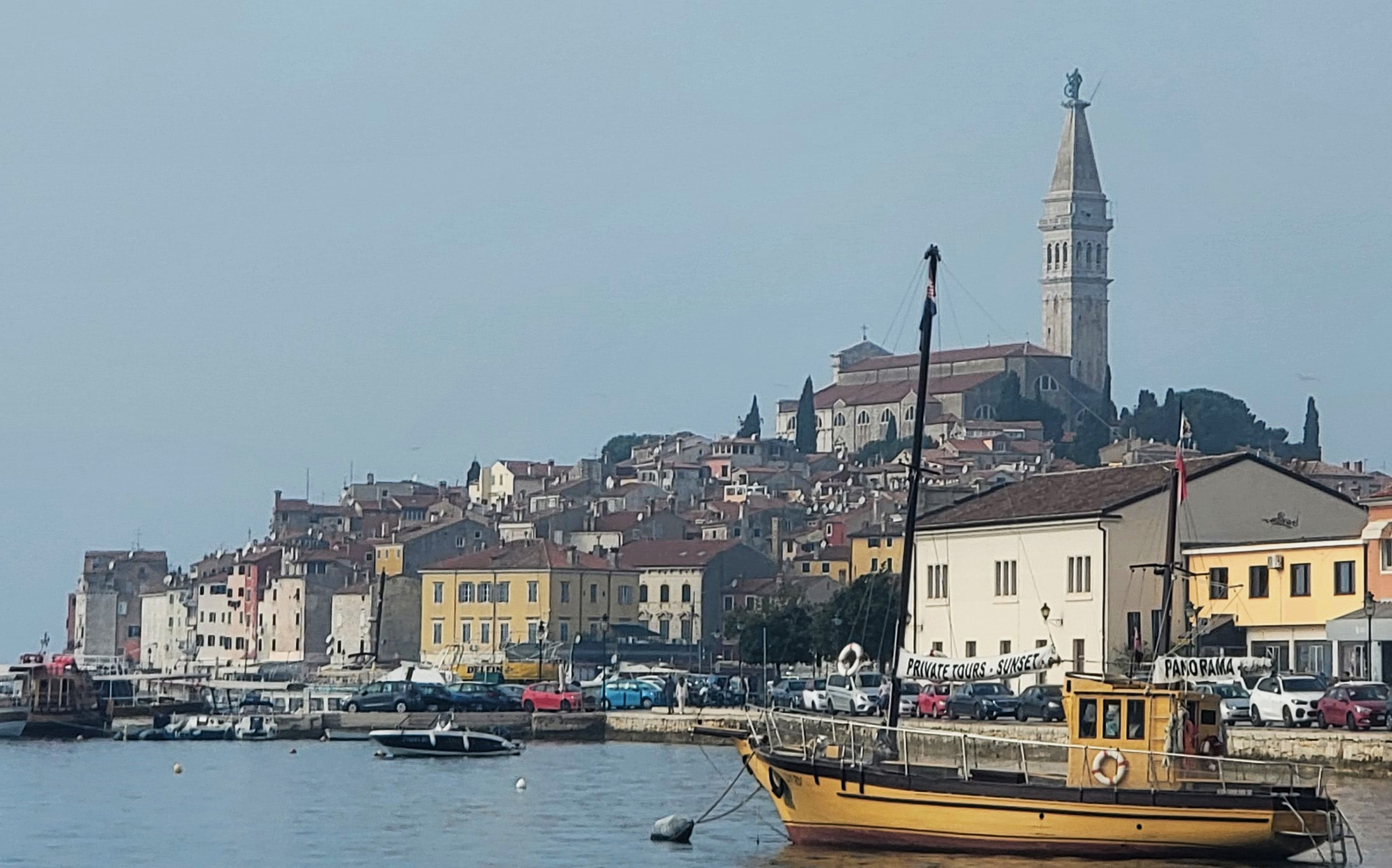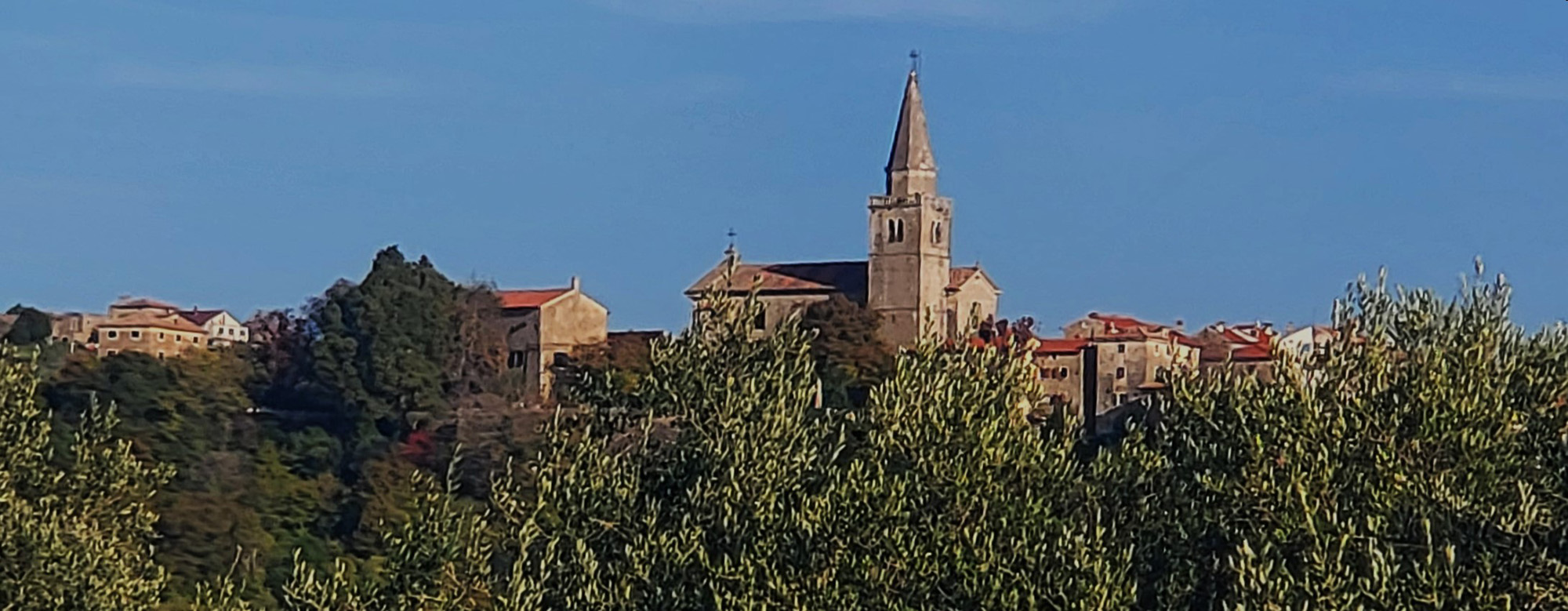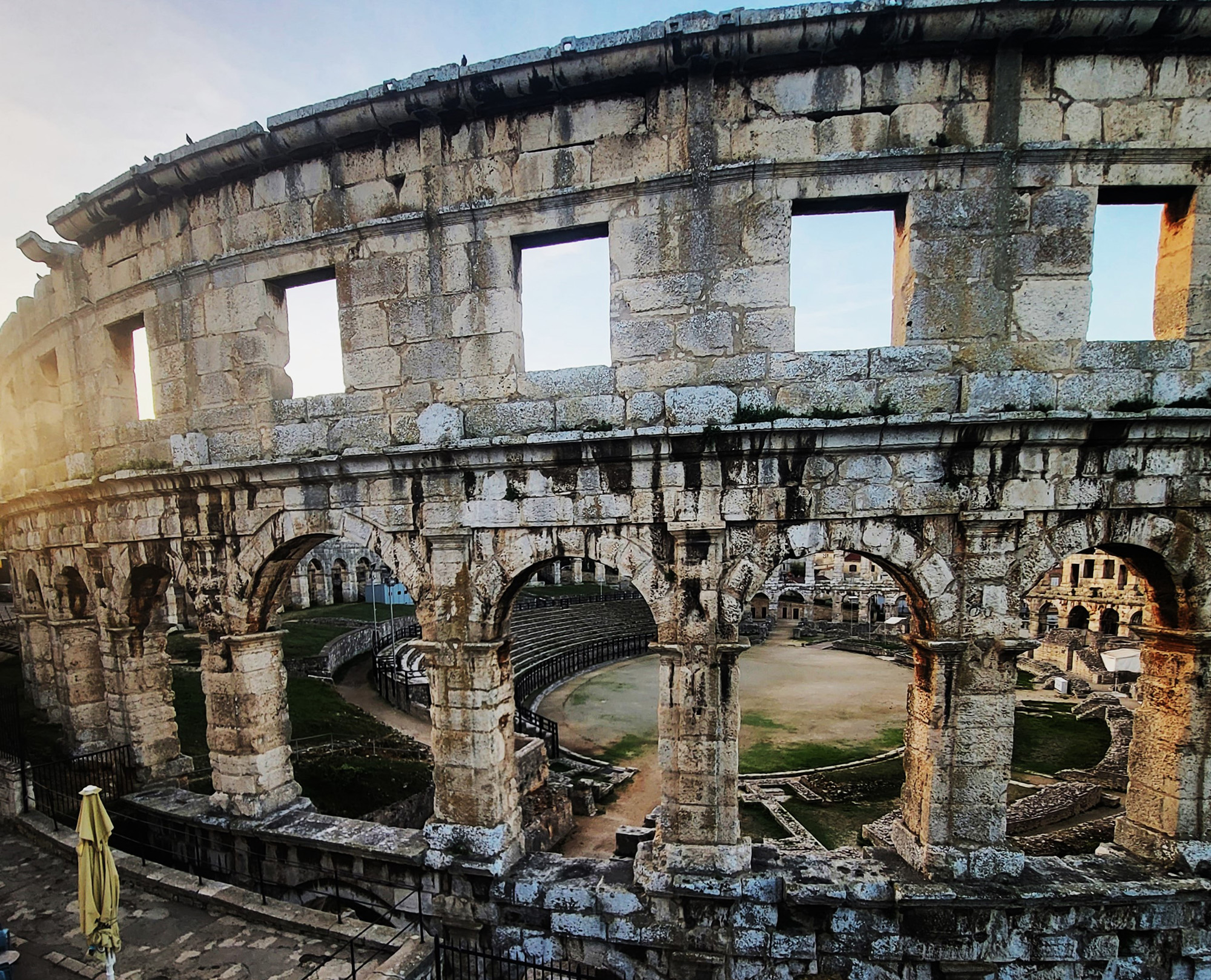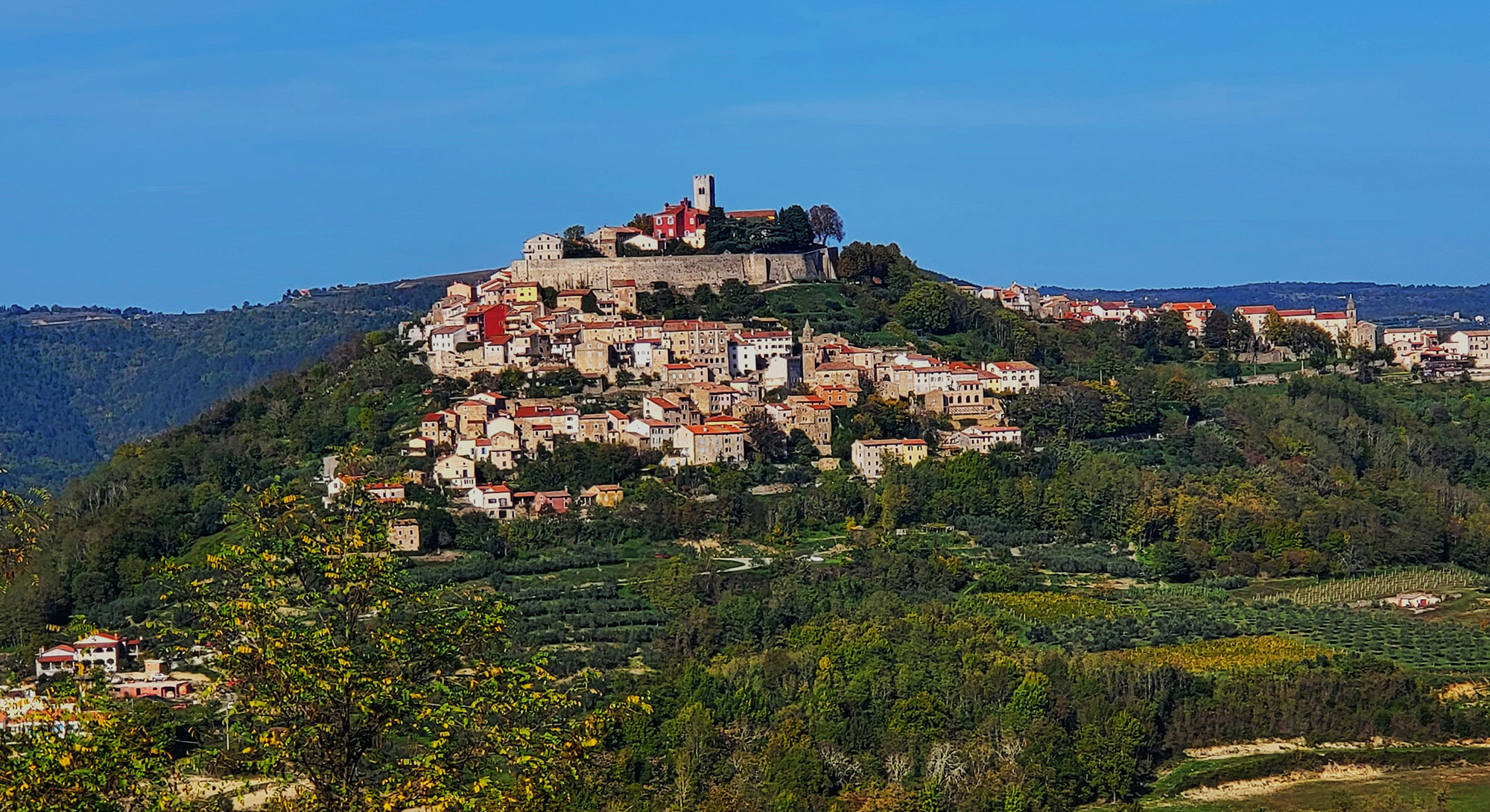Dubrovnik and Day Trips
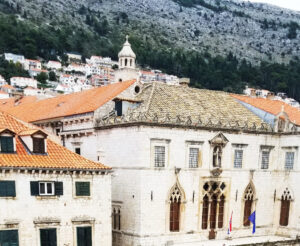
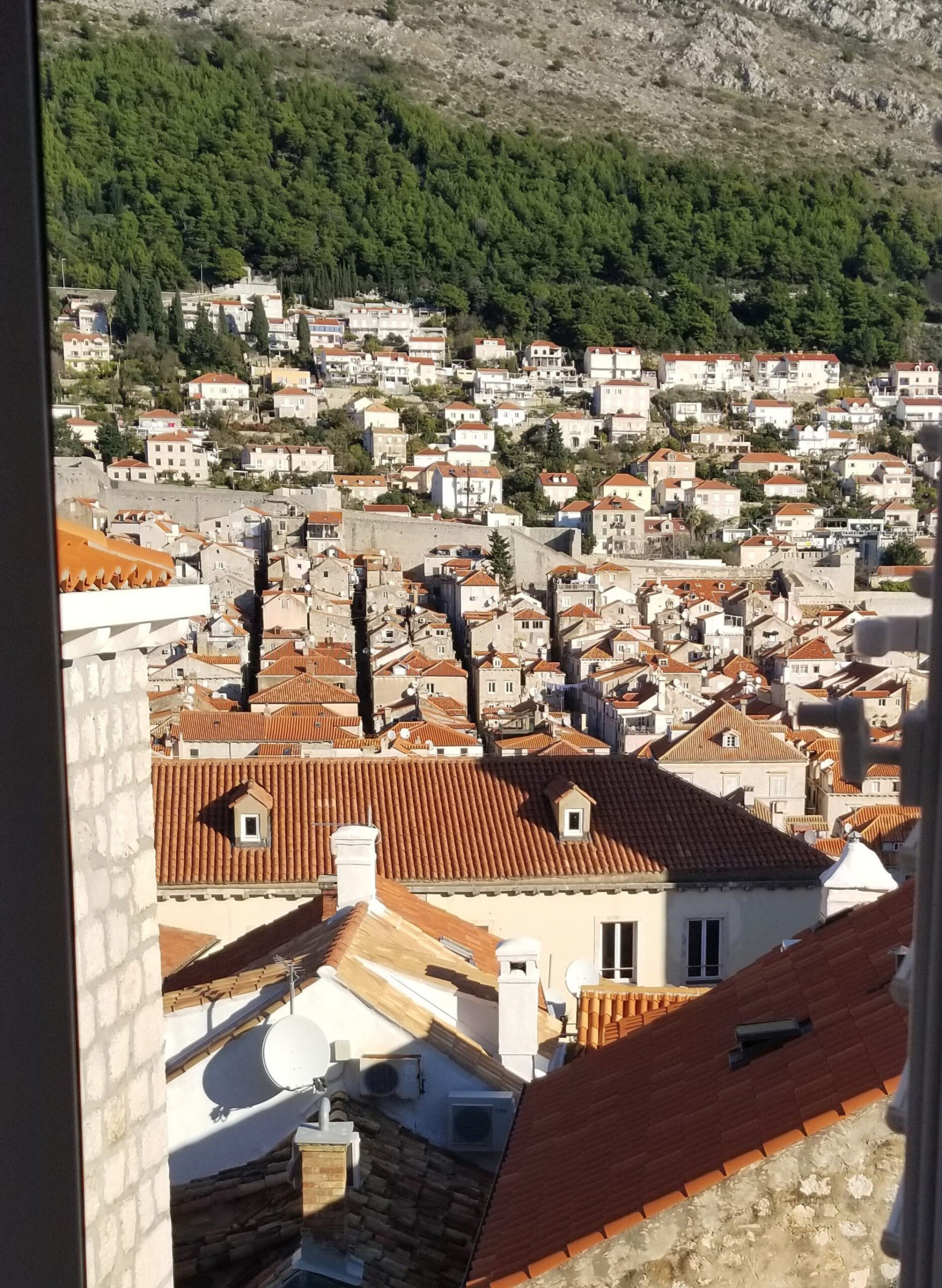 Dubrovnik, located on the Dalmatian coast in southern Croatia, is luminous! Known for its distinctive Old Town, the city it is surrounded by ancient city walls which were completed by the 16th century. The glittering Adriatic Sea is a beautiful foreground for its dramatic Gothic, Renaissance and Baroque buildings. Opposite the Adriatic are the striking Dinaric Alps.
Dubrovnik, located on the Dalmatian coast in southern Croatia, is luminous! Known for its distinctive Old Town, the city it is surrounded by ancient city walls which were completed by the 16th century. The glittering Adriatic Sea is a beautiful foreground for its dramatic Gothic, Renaissance and Baroque buildings. Opposite the Adriatic are the striking Dinaric Alps.
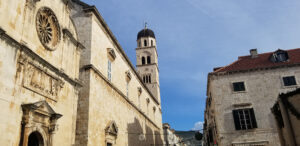 The Old Town is most distinctive with its maze of narrow lanes, back alleys with balconies, historic churches, monuments and medieval ramparts. It is also packed with tempting cafes, restaurants, and art galleries. During our visit, a sizeable portion of the many visitors here came because of The Game of Thrones, a fantasy-drama television series filmed there.
The Old Town is most distinctive with its maze of narrow lanes, back alleys with balconies, historic churches, monuments and medieval ramparts. It is also packed with tempting cafes, restaurants, and art galleries. During our visit, a sizeable portion of the many visitors here came because of The Game of Thrones, a fantasy-drama television series filmed there. 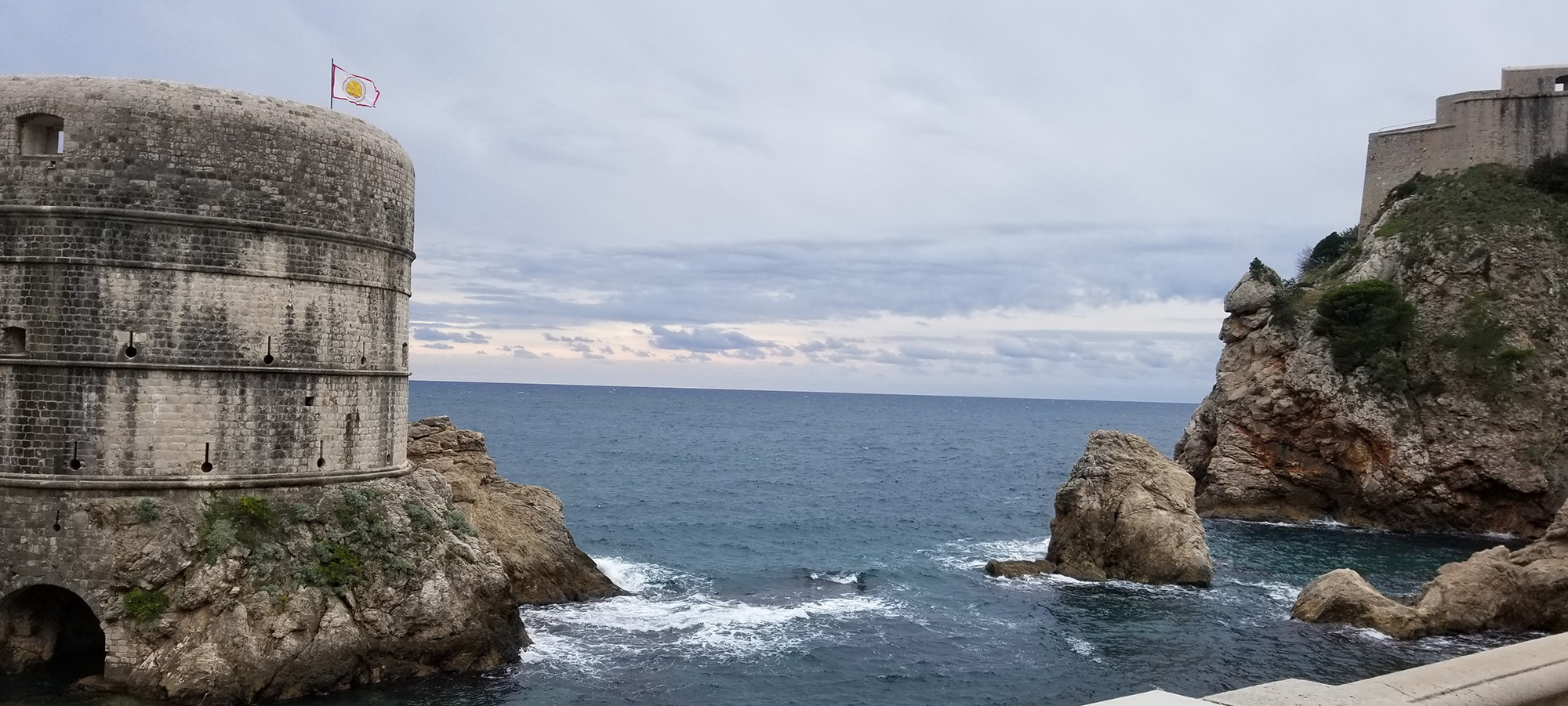
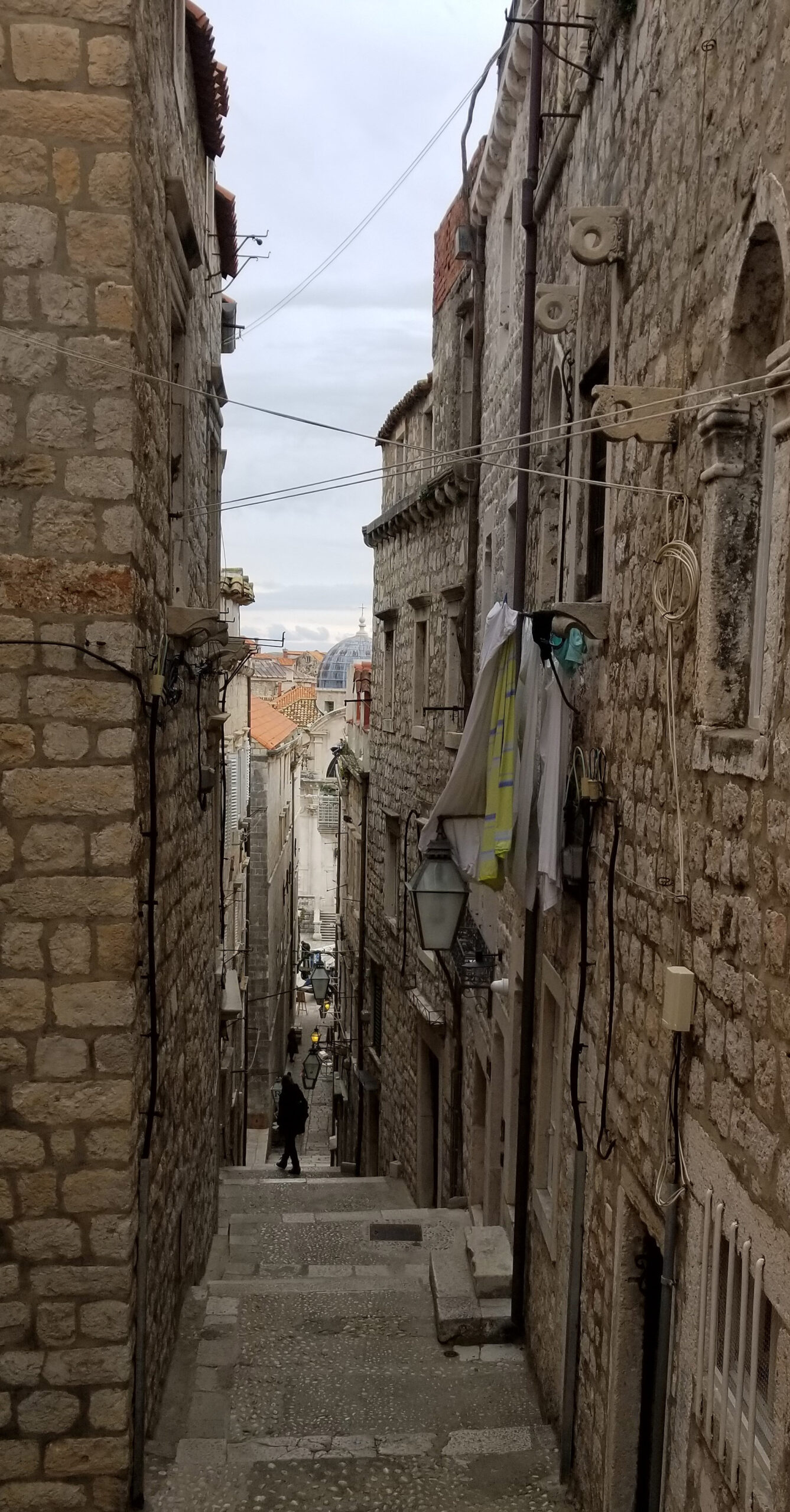 The aficionados sometimes dress in costume and come to Dubrovnik to see the locations that appear in the series. If you enjoy this show, make sure you take the Game of Thrones Walking Tour.
The aficionados sometimes dress in costume and come to Dubrovnik to see the locations that appear in the series. If you enjoy this show, make sure you take the Game of Thrones Walking Tour.
Some of the highlights in Dubrovnik are:
The City Walls
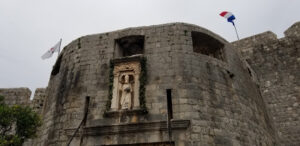
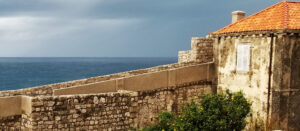 The city walls look out to the azure Adriatic Sea. While walking along these walls make sure to see the Minceta Tower, which was originally built in 1319 It is located at the north end of the wall, near Pile Gate. The views of the old town and the sea from this wall walk are impressive!
The city walls look out to the azure Adriatic Sea. While walking along these walls make sure to see the Minceta Tower, which was originally built in 1319 It is located at the north end of the wall, near Pile Gate. The views of the old town and the sea from this wall walk are impressive!
Franciscan Church and Monastery
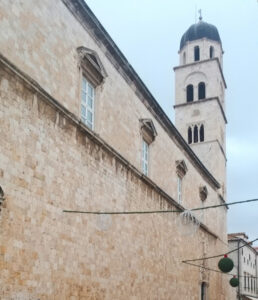 Construction began in the 1300s, but the buildings were heavily damaged in the 1667 earthquake and rebuilt. The original Late Gothic cloister survived and dates from the mid-14th century. Make sure to see the remarkable pieta over the door. It dates from 1498.
Construction began in the 1300s, but the buildings were heavily damaged in the 1667 earthquake and rebuilt. The original Late Gothic cloister survived and dates from the mid-14th century. Make sure to see the remarkable pieta over the door. It dates from 1498.
Cable Car
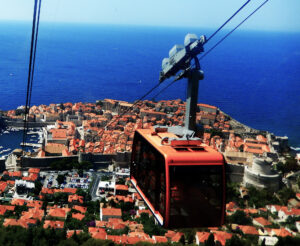 The ten-minute ride on the cable car zips visitors above the old town up Srd Hill (no typo—that’s how it’s spelled). The views are outstanding, and—weather permitting—you may be able to see for 50 kilometers.
The ten-minute ride on the cable car zips visitors above the old town up Srd Hill (no typo—that’s how it’s spelled). The views are outstanding, and—weather permitting—you may be able to see for 50 kilometers.
Sponza Palace
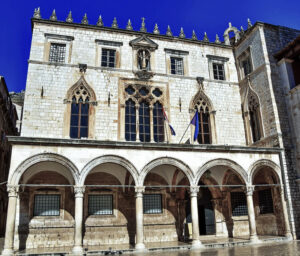 Construction on this treasure began in 1516, and it, too, survived the 1667 earthquake intact. The palace is a fusion of architectural styles: Renaissance and Late Gothic, with Corinthian columns. Over the centuries, it has served as a mint, treasury, armory, and a bank.
Construction on this treasure began in 1516, and it, too, survived the 1667 earthquake intact. The palace is a fusion of architectural styles: Renaissance and Late Gothic, with Corinthian columns. Over the centuries, it has served as a mint, treasury, armory, and a bank.
Saint Blaises Church
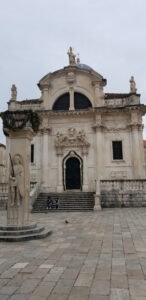 This Baroque church was built between 1706 and 1714 on the site of a 14th century Romanesque church ravaged in the 1667 earthquake. The Feast of St. Blaise is a festival held on February 3rd each year in honor the city’s patron saint. The festival includes a procession, parade and numerous street celebrations. The interior of the church boasts various art objects. Some pre-date the earthquake and were recovered from the original church.
This Baroque church was built between 1706 and 1714 on the site of a 14th century Romanesque church ravaged in the 1667 earthquake. The Feast of St. Blaise is a festival held on February 3rd each year in honor the city’s patron saint. The festival includes a procession, parade and numerous street celebrations. The interior of the church boasts various art objects. Some pre-date the earthquake and were recovered from the original church.
Onofrio’s Fountain
One of the most famous sites in Dubrovnik was this large fountain, constructed in 1438. It brought water into the city from springs 12 kilometers (seven miles) away. Before the great earthquake, it was adorned with sculptures. Today, only the masks remain with drinkable water flowing from their mouths.
Fort Lovrijenac
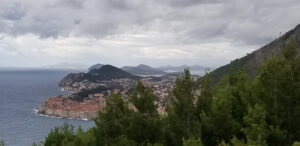 Also known the Saint Lawrence Fortress, the fort has been called “Dubrovnik’s Gibraltar.” It appears often in Game of Thrones episodes. It is dramatically perched 37 meters above sea level. From this spot you can see impressive views of Dubrovnik’s old town.
Also known the Saint Lawrence Fortress, the fort has been called “Dubrovnik’s Gibraltar.” It appears often in Game of Thrones episodes. It is dramatically perched 37 meters above sea level. From this spot you can see impressive views of Dubrovnik’s old town.
Day Trips from Dubrovnik
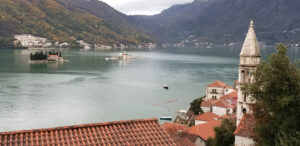
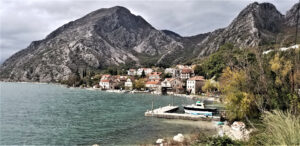 There are also inspiring daytrips to Montenegro a Balkan country with medieval villages and rugged mountains. Kotor is a spectacular town in Montenegro with many historic sights. It has one of the best preserved medieval old towns in the Adriatic and is a UNESCO World Heritage Site. The Adriatic Sea laps up on its shores.
There are also inspiring daytrips to Montenegro a Balkan country with medieval villages and rugged mountains. Kotor is a spectacular town in Montenegro with many historic sights. It has one of the best preserved medieval old towns in the Adriatic and is a UNESCO World Heritage Site. The Adriatic Sea laps up on its shores.
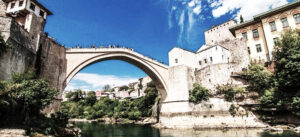 Also close to Dubrovnik is Mostar—a picturesque city in southern Bosnia and Herzegovina. It sprawls across the Neretva River. There is an unforgettable bridge, Stari Most which staddles the river.
Also close to Dubrovnik is Mostar—a picturesque city in southern Bosnia and Herzegovina. It sprawls across the Neretva River. There is an unforgettable bridge, Stari Most which staddles the river. 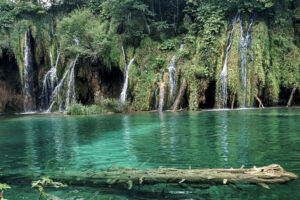 Make sure to get a photo looking up at it from the banks of the Neretva below.
Make sure to get a photo looking up at it from the banks of the Neretva below.
One of the natural highlights of Croatia is Plitvice Lake National Park. The 300-square kilometer park features many beautiful lakes, cascades and waterfalls. There are many scenic walks or hikes to choose from.
Inspring Istria
 Istria is a large peninsula shared by three countries, Croatia, Slovenia and Italy. Most of it is in Croatia. Blending the many influences and long history, Istria has a unique fusion of cultures, which expresses itself in the architecture, art and food. Some of the most beautiful hill towns are located here as well as the extraordinary Medieval and Renaissance villages located beside the sea.
Istria is a large peninsula shared by three countries, Croatia, Slovenia and Italy. Most of it is in Croatia. Blending the many influences and long history, Istria has a unique fusion of cultures, which expresses itself in the architecture, art and food. Some of the most beautiful hill towns are located here as well as the extraordinary Medieval and Renaissance villages located beside the sea.
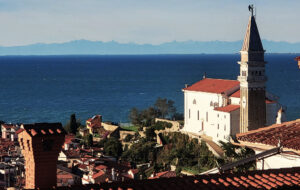 Piran, in Slovenia, is a medieval jewel pressed up against the Adriatic Sea. From above and from the medieval city walls there are many dramatic photo opportunities. It is full of Venetian and Gothic architecture. Don’t miss the colorful Tartini Square which is right on the lively harbor. There are also plenty of cafes with a view serving a delectable catch of the day.
Piran, in Slovenia, is a medieval jewel pressed up against the Adriatic Sea. From above and from the medieval city walls there are many dramatic photo opportunities. It is full of Venetian and Gothic architecture. Don’t miss the colorful Tartini Square which is right on the lively harbor. There are also plenty of cafes with a view serving a delectable catch of the day.
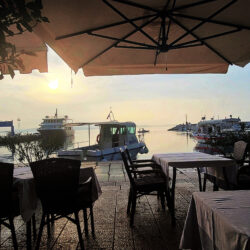
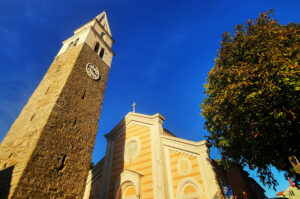 From Piran, Izola is a pleasant stop for lunch. It is less crowded than Piran and it has loads of cafes with fresh seafood with seats and tables next to the waterfront. More on Slovenia, particularly the area near Bled, will be contained in a future post.
From Piran, Izola is a pleasant stop for lunch. It is less crowded than Piran and it has loads of cafes with fresh seafood with seats and tables next to the waterfront. More on Slovenia, particularly the area near Bled, will be contained in a future post.
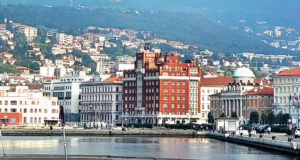 The Italian portion of Istria is a small strip of land south of Trieste, but the whole northern coast has a robust Italian vibe. A large portion of the peninsula’s population has Italian heritage.
The Italian portion of Istria is a small strip of land south of Trieste, but the whole northern coast has a robust Italian vibe. A large portion of the peninsula’s population has Italian heritage.
My favorite stops in Croatian Istria are:
Rovinj
This coastal city is one of the most popular destinations in Istria. The old town is built on an island, which was connected with the mainland in the 18th century. The original historic town is a maze of cobbled streets and back alleys leading to the hilltop Church of St. Euphemia, which dominates the horizon. Rovinj is a lively fishing port, where you can experience the character of a small fishing village. The romantic waterfront restaurants and cafes serve the fresh catch of the day.
Poreč
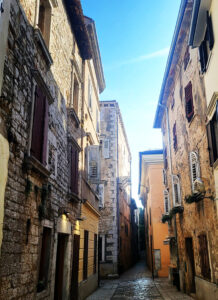
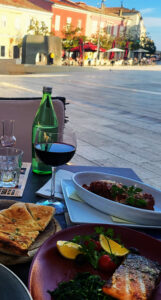 The seaside port of Poreč is on the west coast of the peninsula (east coast of the Adriatic), set against the tranquil waves of the bay and framed by rolling hills capped with historic hilltop villages.
The seaside port of Poreč is on the west coast of the peninsula (east coast of the Adriatic), set against the tranquil waves of the bay and framed by rolling hills capped with historic hilltop villages.
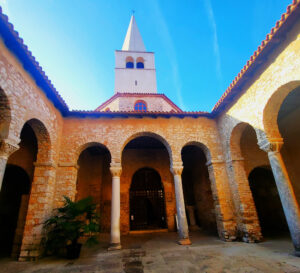 This ancient Roman town is over 20 centuries old, settled by the locals in prehistoric times. Make sure you visit the UNESCO World Heritage site of the Basilica of Euphrasius, and stop in the main square at a local cafe for a drink or some Italian inspired dishes with a fresh Croatian twist!
This ancient Roman town is over 20 centuries old, settled by the locals in prehistoric times. Make sure you visit the UNESCO World Heritage site of the Basilica of Euphrasius, and stop in the main square at a local cafe for a drink or some Italian inspired dishes with a fresh Croatian twist!
Grožnjan
This 14th century hill top village is beautifully restored due to the interest created by a large number of artists and musicians who settled here in the 1960s. Like so many other towns in Istria, it was influenced by the Venetians. The strong Italian roots can be seen in the food, art, language, and architecture.
Pula
The most important site in this striking city is the Roman Amphitheatre, a UNESCO World Heritage Site, built between 27 BC and 68 AD. It is one of the most complete structures of this period in the world. It is three stories tall with arched walls and four separate towers built around the perimeter. You can still see the underground passages used by the gladiators and performers down below. There are other historic buildings as well as good cafes to eat in the old town. We stayed in a remarkable Airbnb with the most breathtaking view of the Amphitheatre. (See a Room with a View)
Motovun
Motovun is the quintessential hilltop town. Well-known for its white and black truffles and wines. It is best known for the white Istrian Malvasia produced here. In July or August there is a six day the Film Festival where you will be able to sample unique films or concerts.
There is so much to see in Croatia you could spend a month here taking in the architectural wonders and unique food and culture. There are also tempting beaches and natural parks to discover.

